Introduction
Product Overview
{{section_header}}{{section.name}}{{/section_header}}
Meet the Bose AE2s
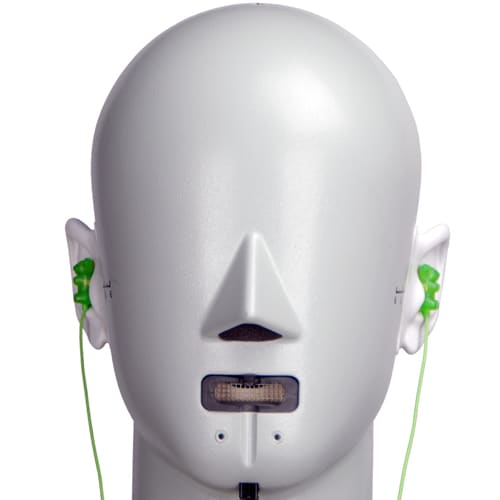
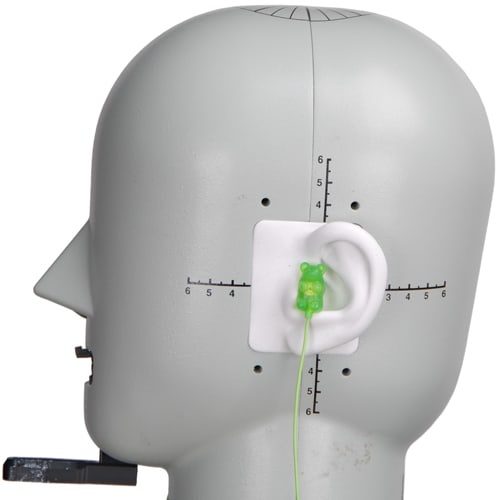
Speakers
{{section_header}}{{section.name}}{{/section_header}}
The speaker element is protected by a thin, non-removable cloth, pictured below. It's not much, but unless your ears are typically veritable geysers of earwax, you should be fine for a long while.
Band
{{section_header}}{{section.name}}{{/section_header}}
Cable
{{section_header}}{{section.name}}{{/section_header}}
The cable of the {{product.name}} is a 3.93 foot long, thinly-insulated wire
The {{product.model}}'s plug is a very boring 1/8th inch jack, with very little in the way of protection for the cable.
The {{product.name}}'s cord guards seem able to handle the job of protecting the thin cable as it exits the ear cups, as they're made of a rigid plastic.
In the Box
{{section_header}}{{section.name}}{{/section_header}}
The {{product.name}}s come packaged with headphones, assorted documentation, and a travel bag.
Durability
{{section_header}}{{section.name}}{{/section_header}}
These aren't the most durable headphones we've seen, and in fact they feel a little cheap. There isn't a whole lot you can do to maintain these cans, and what isn't made of cloth or pleather is made of a cheap-feeling plastic. Be careful not to sit on them.
Aesthetics
{{section_header}}{{section.name}}{{/section_header}}
The {{product.name}}s have a clean, sort of industrial look to them that is actually quite appealing. Despite any other shortcomings of the {{product.model}}s, they do look very nice.
Frequency Response
{{section_header}}{{section.name}}{{/section_header}}
Well, here it is: the meat and potatoes of performance in headphones reviews. Unfortunately, Bose's first course is dry and tasteless. The AE2's frequency response certainly shows a fair showing for the bass and low-mid tones, but as soon as it hits 2kHz (the upper level of fundamental frequencies in human speech, high notes from woodwinds and stringed instruments), they drop their emphasis precipitously, underplaying a huge range of frequencies that will make your listening experience a very forgettable one. The emphasis comes back to ideal limits for a very short time at about 8 to 10kHz, but at that point, it's almost worthless.

Click here for more information on our frequency response test.
Distortion
{{section_header}}{{section.name}}{{/section_header}}
The {{product.name}}s don't have much distortion, but it's there. There doesn't seem to be a pattern beyond general distortion, though you probably won't notice it too much at this level.
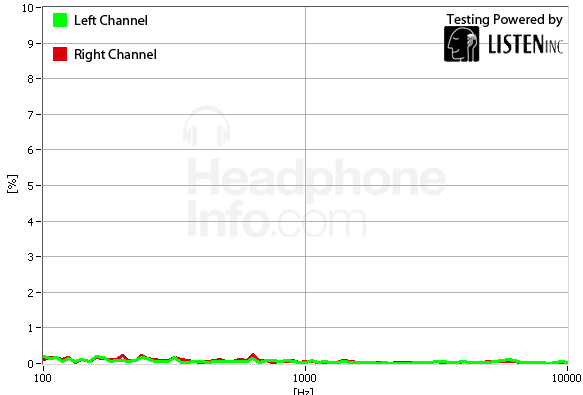
Click here for more information on our frequency response test.
Tracking
{{section_header}}{{section.name}}{{/section_header}}
In terms of tracking and channel preference, the {{product.name}}s fall flat yet again, with erratic shifts from the left channel to the right, at worst a 7dB shift, which will absolutely be noticeable to listeners.
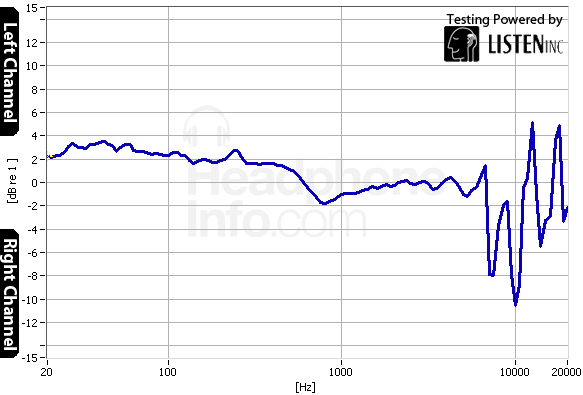
Click here for more information on our frequency response test.
Isolation
{{section_header}}{{section.name}}{{/section_header}}
While it's no secret that on-ears typically don't attenuate sound well, the {{product.name}}s do nothing to buck this trend, as they seem to only block out a short swath of higher-end frequencies, and absolutely no bass at all. Most people don't think much about how important noise isolation is with headphones, and many ignore it altogether when they buy headphones. If you think that isolation is no big deal, consider the danger of NIHL.

Click here for more information on our isolation test.
Leakage
{{section_header}}{{section.name}}{{/section_header}}
Despite the fact that the {{product.name}}s do not isolate well, they do a fair to average job of corralling their own sound. Still, if your tunes are bumping, you may find that it is possible to disturb those around you.
Click here for more information on our leakage test.
Maximum Usable Volume
{{section_header}}{{section.name}}{{/section_header}}
The {{product.name}}s can output a maximum level of 113.29dB before reaching the magic 3% level of acceptable distortion. Like always, we would like to remind you that you really should not be listening to your headphones this loud anyways.
Click here for more on our maximum usable volume test
Short-Term Use
{{section_header}}{{section.name}}{{/section_header}}
When we first put the AE2s on our heads, the majority opinion was: "wow, these are comfortable." Given their light weight, adjustable band and soft padding, this comes as no surprise. Still, we must make note that because all craniums are of different shapes and sizes, they may not be for you! See if you can try them on first before you buy.

Extended Use
{{section_header}}{{section.name}}{{/section_header}}
Over time, the comfort level didn't really change, so they get identical marks here.
Customizability
{{section_header}}{{section.name}}{{/section_header}}
There is liiterally nothing you can do to customize your headphones with the contents of the original package. Sure, some enterprising DIYers may paint or alter their cans in some way (don't do this), but there are no replacement ear pads, no connectivity options outside of the standard plug, no nothing.
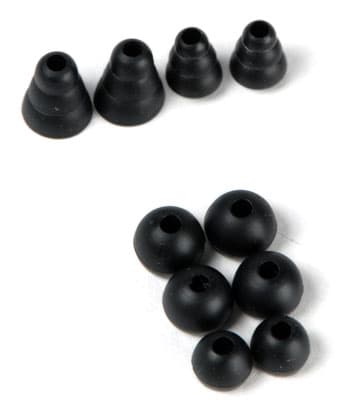
Cable Connectivity
{{section_header}}{{section.name}}{{/section_header}}
The cord of the {{product.name}}s is 3.93 feet long, and really does not have any other connectivity options outside of its standard plug. That's it. There's no more.
Portability
{{section_header}}{{section.name}}{{/section_header}}
Included in the packaging for the {{product.name}}s is a carrying pouch, but that really doesn't do much aside from protect your cans from dust. Aside from that, the {{product.model}}s are very lightweight, so they won't weigh your bag or purse down if you decide to store them there.
Maintenance
{{section_header}}{{section.name}}{{/section_header}}
There is almost nothing you can do to maintain the {{product.model}}s outside of being very careful with them. This could cause you great frustration in the future, but at least these cans aren't as expensive as the HD 800s.
Design
{{section_header}}{{section.name}}{{/section_header}}
Despite the fact that both of these headphones are entry-level, the Beyerdynamics seem to have much-improved build quality over the {{product.name}}, as they incorporate the much-stronger material aluminum in their important structural bits. While the {{product.name}}s are a little more stylish, the DTX 300 ps are quite a bit more durable.
Frequency Response
{{section_header}}{{section.name}}{{/section_header}}
Both frequency responses are somewhat similar in that they both suffer from underemphasis in the mid to high tones, but the {{product.name}}s preserve a little bit more of the high frequencies, even if it isn't all that much. The {{product.model}}s also keep bass frequencies at a slightly higher level than the DTX 300 ps.
Distortion
{{section_header}}{{section.name}}{{/section_header}}
Neither set of cans were perfect here, but the {{product.name}}s have a bit less in terms of distortion.
Tracking
{{section_header}}{{section.name}}{{/section_header}}
Neither set of headphones impress in the tracking department, but neither is consistently better or worse than the other.
Isolation
{{section_header}}{{section.name}}{{/section_header}}
Do not buy these cans if you expect to block out the outside world. Neither pair of phones attenuate noise well.
Comfort
{{section_header}}{{section.name}}{{/section_header}}
While you should try each on and decide for yourself, we prefer the DTX 300 ps here, as it's extremely easy to forget you have them on. Their lightweight build and extremely soft padding make for a super-comfortable wear.
Verdict
{{section_header}}{{section.name}}{{/section_header}}
This one's up to you to decide what's more important to you when you buy headphones, as each have their clear advantages and disadvantages. The {{product.name}}s have a lower level of distortion and slightly better frequency response, but they also are more fragile and less comfortable; not to mention double the MSRP.
Design
{{section_header}}{{section.name}}{{/section_header}}
Compared to the {{product.name}}s. the ATH-M50s are built like a tank. Their casing, cord insulation and quality, and their guards are ridiculously robust, and built for wear and tear. You won't break these cans by accident.
Frequency Response
{{section_header}}{{section.name}}{{/section_header}}
We're going to say that the ATH-M50s are probably going to appeal to more listeners based on the fact that they seem to preserve a bit more of the mid to high tones in their frequency response than the {{product.model}}, even if they boost bass frequencies a little more than their Bose competitors.
Distortion
{{section_header}}{{section.name}}{{/section_header}}
The ATH-M50s with this one hands-down.
Tracking
{{section_header}}{{section.name}}{{/section_header}}
The ATH-M50s also have less dramatic tracking issues.
Isolation
{{section_header}}{{section.name}}{{/section_header}}
Neither the {{product.name}}s nor the Audio Technica ATH-M50s isolate sound well, and both leak a bunch of sound.
Comfort
{{section_header}}{{section.name}}{{/section_header}}
Both sets of headphones are very comfortable, but the {{product.name}}s may appeal to more people simply because they are of a much lighter weight than the ATH-M50s. Still, it's not like the ATH-M50s are uncomfortable by any stretch of the imagination, so we recommend you try them on before making your purchasing decision.
Verdict
{{section_header}}{{section.name}}{{/section_header}}
For just a few dollars more, you can have a pair of cans that aren't as portable, but have vastly improved sound and durability. Our first inclination is to go for the ATH-M50s, but if your neck muscles are super-weak, or if you find a super-good deal on the {{product.name}}s, weigh your options and decide what you want in a pair of cans before shelling out a good chunk of cash.
Design
{{section_header}}{{section.name}}{{/section_header}}
Obviously there are significant design differences between on-ears and in-ears, but there are certain performance advantages to going with a set of in-ears if you are okay with the drastic comfort dropoff. The mc5s are well-constructed, but they are still a set of in-ears: they are more fragile by design, and require much more attention and care.
Frequency Response
{{section_header}}{{section.name}}{{/section_header}}
Here we see a clear slam-dunk victory over the {{product.name}}s. While the mc5s suffer from a slight general underemphasis, their frequency response is very flat outside of a short range of emphasis and the clipping of some of the highest frequencies that are not typically very loud.
Distortion
{{section_header}}{{section.name}}{{/section_header}}
Here too, the mc5s are the superior set of headphones. Expect near-reference quality here.
Tracking
{{section_header}}{{section.name}}{{/section_header}}
The mc5s again are clearly better than the {{product.name}}s, this time by virtue of the fact that they have virtually no issues in tracking response, and the {{product.name}}s seem to struggle.
Isolation
{{section_header}}{{section.name}}{{/section_header}}
If it could be believed, the mc5s' biggest strength is isolation, so much so, that there are high-end earplugs with the same design. Not only do the mc5s block out well over 90% of all outside noise, but they go a long way in preventing their users from inadvertently damaging their hearing.
Comfort
{{section_header}}{{section.name}}{{/section_header}}
Here is where the {{product.name}}s hold a clear advantage over the mc5s, as they are leagues more comfortable than the in-ear powerhouses. We've heard the complaint that the mc5s feel like "an ear infection" or "a violation of the ear canal," but that's the tradeoff for performance sometimes. Your mileage can and usually will vary, so try both out before making a decision.
Verdict
{{section_header}}{{section.name}}{{/section_header}}
If you want portable audio performance at a fraction of the cost one would normally pay for it, by all means grab the mc5s. They offer better frequency response, less distortion, better tracking and better isolation by several orders of magnitude. That is, if you can deal with in-ear headphones. If comfort is your main concern, the Bose cans may be a better fit.
Design
{{section_header}}{{section.name}}{{/section_header}}
Both the Monster Beats and the {{product.name}}s have a design seen everywhere on city streets, so it's a bit difficult to tell which one we like better. The Beats are a little more durable, but you'll just have to decide which style you like better.
Frequency Response
{{section_header}}{{section.name}}{{/section_header}}
The Beats take this one, but really, the two frequency responses aren't terribly different. Both have underemphasis problems but the Beats have louder bass.
Distortion
{{section_header}}{{section.name}}{{/section_header}}
Due to the fact that the Beats have an active noise cancellation system, they have a noticeable level of distortion at any volume level. If you're looking for pristine audio, don't grab the Beats.
Tracking
{{section_header}}{{section.name}}{{/section_header}}
The {{product.name}}s, despite their erratic tracking response, have a better score here, as the Beats have terrible tracking.
Isolation
{{section_header}}{{section.name}}{{/section_header}}
Neither set of headphones attenuate much noise. The Beats block out more low-frequency noise, but not much.
Comfort
{{section_header}}{{section.name}}{{/section_header}}
Both the Beats and the {{product.name}}s are very comfortable, and this one is a bit hard to gauge, but we'll probably side with the {{product.name}}s on this one: they're super light and they don't grip your head too tightly.
Verdict
{{section_header}}{{section.name}}{{/section_header}}
We'd stick with the {{product.name}}s here; they don't have too much of a performance dropoff from the Beats, and certainly not enough to justify shelling out double the cash to get the much-hyped Monster over-ears.
Conclusion
{{section_header}}{{section.name}}{{/section_header}}
Overall, the {{product.name}}s aren't a bad entry-level bet, but you can definitely do better no matter what you're looking for in headphones. The cost is a little hard to swallow for the performance they give, but if you can find them for cheaper than MSRP, they warrant a look if you've weighed your options and still decide that these cans are worth it. Be advised though, that while they are ultra light and portable, they are by no stretch of the imagination worldbeaters in regards to other cans designed for better audio performance in their price range.
Meet the tester
A seasoned writer and professional photographer, Chris reviews cameras, headphones, smartphones, laptops, and lenses. Educated in Political Science and Linguistics, Chris can often be found building a robot army, snowboarding, or getting ink.
Checking our work.
Our team is here for one purpose: to help you buy the best stuff and love what you own. Our writers, editors, and lab technicians obsess over the products we cover to make sure you're confident and satisfied. Have a different opinion about something we recommend? Email us and we'll compare notes.
Shoot us an email


